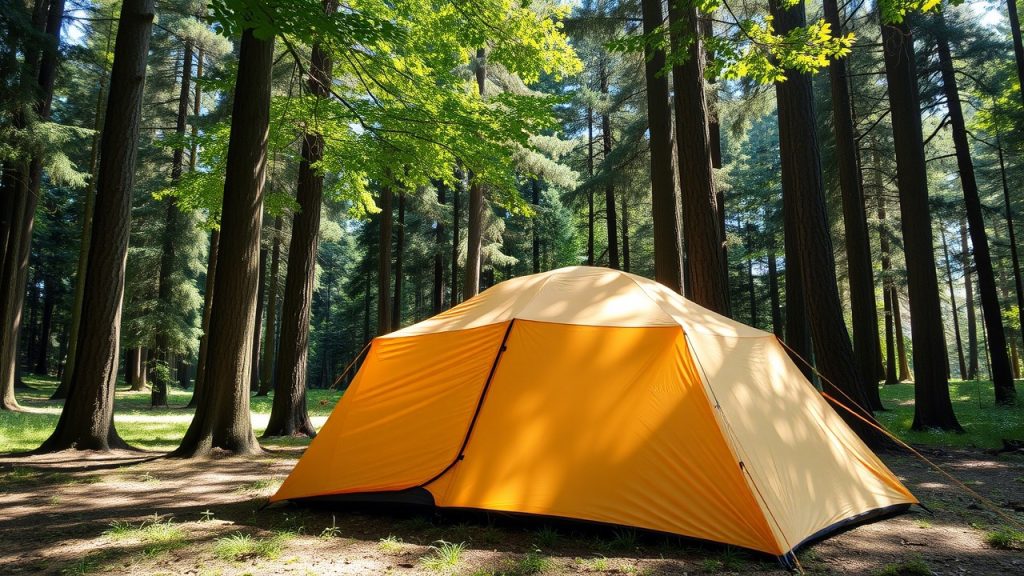The biting wind howls outside, and the temperature gauge stubbornly refuses to climb. For most, this signals a retreat indoors, a cozy haven shielded from winter’s icy grip. But for the adventurous soul, the call of the wild doesn’t diminish with the frost. In fact, the stark beauty of a snow-covered landscape and the serene silence of a winter night in the wilderness hold a unique allure.
However, venturing into the cold demands respect and meticulous preparation, especially when it comes to shelter. Your tent isn’t just a fabric roof over your head; it’s your primary defense against hypothermia, frostbite, and the sheer discomfort of prolonged exposure to frigid temperatures. Choosing the right tent and employing smart strategies for warmth can be the difference between a memorable winter adventure and a miserable, potentially dangerous experience.
This comprehensive guide will delve into ten exceptional tent ideas designed to keep you toasty even when the mercury plummets. We’ll explore their unique features, suitability for different winter conditions, and crucial considerations for maximizing warmth. Whether you’re planning a multi-day backcountry ski tour or a cozy winter camping weekend, these insights will equip you to choose the perfect shelter for your cold-weather escapades – all within the next week!
Understanding the Challenges of Cold Weather Camping
Before we dive into specific tent ideas, it’s crucial to understand the fundamental challenges cold weather presents:
- Heat Loss: The primary concern is preventing body heat from escaping. This happens through conduction (direct contact with cold surfaces), convection (heat loss to moving air), radiation (heat transfer through electromagnetic waves), and evaporation (loss of heat through sweating or moisture).
- Condensation: Ironically, even in freezing temperatures, condensation can be a significant issue inside your tent. The warm, moist air you exhale and any moisture from your gear can condense on the cold inner tent walls, leading to dampness and increased heat loss.
- Snow and Wind: Winter often brings heavy snowfall and strong winds. Your tent needs to be robust enough to withstand these elements without collapsing or tearing. Wind can also drastically increase heat loss through convection.
- Ground Cold: The frozen ground acts as a massive heat sink, drawing warmth away from your tent and sleeping system.
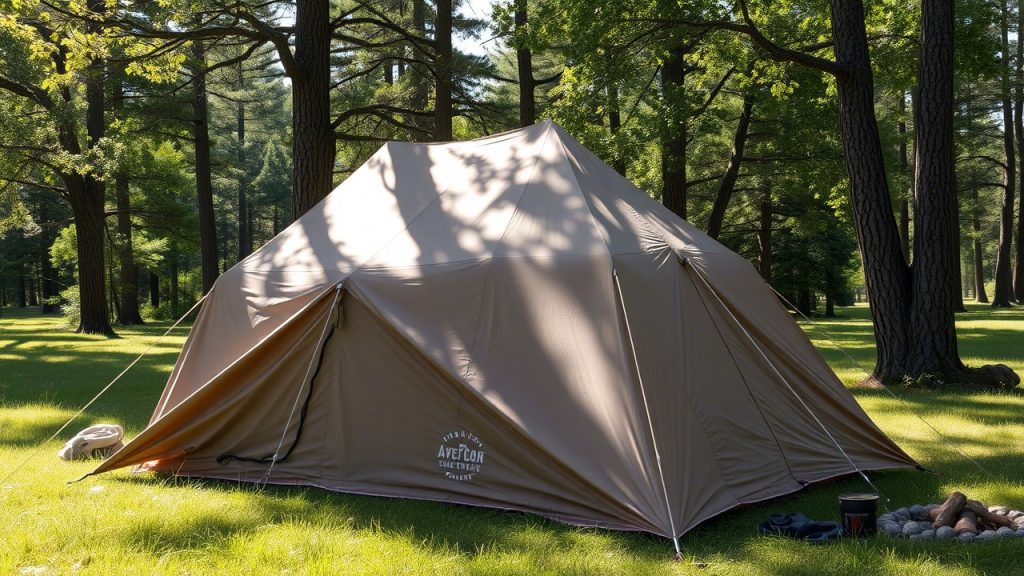
Key Features to Look for in a Cold Weather Tent
When evaluating tents for winter use, consider these essential features:
- Four-Season Designation: These tents are specifically designed to withstand harsh winter conditions, featuring stronger poles, more durable fabrics, and designs that shed snow and resist wind.
- Full Fly: A full fly extends all the way to the ground, providing maximum protection from snow, wind, and rain. It also helps create a vestibule for storing gear and cooking, keeping moisture and debris out of the main sleeping area.
- Minimal Mesh: While ventilation is important, excessive mesh in the inner tent can lead to significant heat loss in cold weather. Look for tents with less mesh and more solid fabric panels.
- Strong Pole System: Winter tents require robust and flexible poles (typically aluminum alloys) to withstand heavy snow loads and strong winds. Look for tents with multiple pole intersections for added strength.
- Internal Guy Lines: Some high-end winter tents feature internal guy lines that can be deployed to provide extra structural support in extreme conditions.
- Snow Skirts: These fabric extensions around the base of the fly can be buried in the snow to create a seal, preventing drafts and keeping snow out of the vestibule.
- Adequate Ventilation: While minimizing mesh is important, proper ventilation is still crucial to reduce condensation. Look for vents in the fly and possibly the inner tent that can be opened and closed as needed.
- Spacious Vestibules: Large vestibules are invaluable in winter for storing bulky gear like skis, snowshoes, and backpacks, as well as for preparing meals in a sheltered environment.
10 Best Tent Ideas to Stay Warm in Cold Weather in a Week
Here are ten tent concepts, categorized by their primary strengths and suitability for different winter adventures:
1. The Bombproof Expedition Tent:
- Concept: A fortress against the harshest winter elements. These tents prioritize ultimate strength, durability, and weather protection.
- Features: Heavy-duty, high-denier fabrics, numerous guying points, a complex and robust pole structure (often with 5-6 poles or more), full fly with snow skirts, minimal mesh in the inner tent, and often multiple spacious vestibules.
- Warmth Factor: Excellent due to the robust construction, minimal ventilation, and ability to seal out drafts.
- Ideal For: High-altitude mountaineering, extended base camps in extreme conditions, expeditions in areas with heavy snow and strong winds.
- Considerations: These tents are typically heavier and more expensive. Ventilation needs to be carefully managed to minimize condensation.
2. The Lightweight Winter Trekking Tent:
- Concept: Balancing warmth and weather protection with a focus on weight for backpacking and ski touring.
- Features: Lighter but still durable fabrics (often with a silicone or polyurethane coating), a strong 3-4 pole structure, full fly with potential for snow skirts, strategically placed ventilation, and a balance between solid fabric and mesh in the inner tent.
- Warmth Factor: Good, offering a significant upgrade in warmth compared to three-season tents while remaining relatively lightweight.
- Ideal For: Multi-day winter backpacking trips, ski touring adventures where weight is a critical factor.
- Considerations: May not be as bombproof as expedition tents in extreme storms. Careful site selection to minimize wind exposure is important.
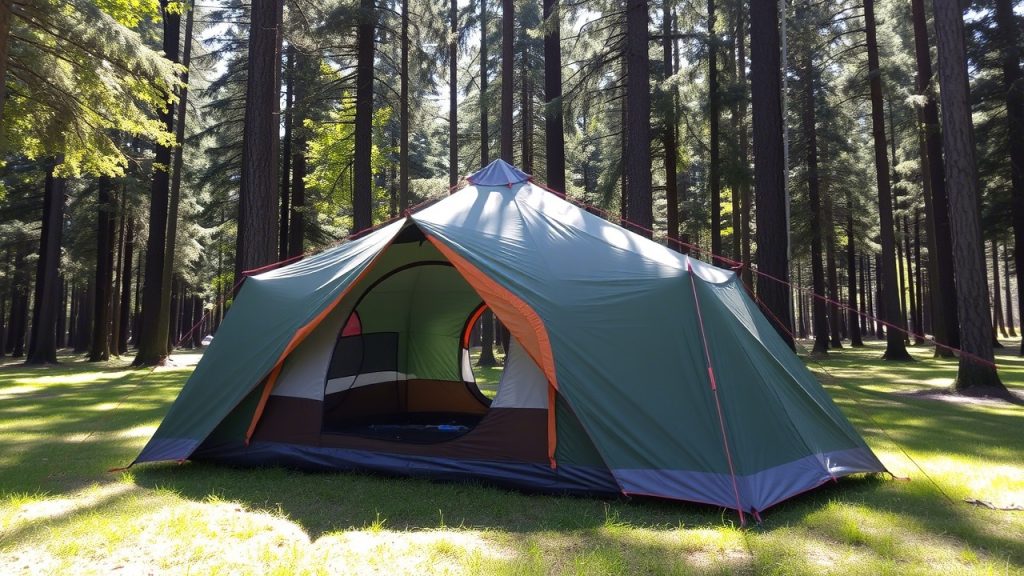
3. The Hot Tent with Stove Jack:
- Concept: Incorporating a wood-burning stove inside the tent for exceptional warmth and the ability to dry gear.
- Features: Durable canvas or fire-retardant synthetic fabric, a stove jack (a heat-resistant port for the stovepipe), ample ventilation options, often a tipi or wall-tent style for more headroom.
- Warmth Factor: Outstanding. A small wood stove can create a very warm and comfortable interior, even in sub-zero temperatures.
- Ideal For: Longer stays in cold environments, base camps where weight is less of a concern, those who prioritize comfort and the ability to dry wet gear.
- Considerations: Requires carrying a wood stove and fuel. Fire safety is paramount. Ventilation is crucial to prevent carbon monoxide poisoning. These tents can be heavier and bulkier.
4. The Insulated Tent:
- Concept: Integrating insulation directly into the tent fabric to trap heat and reduce condensation.
- Features: Multi-layer fabric construction with an insulating inner layer (e.g., fleece or a synthetic fill), a robust outer layer for weather protection, strong pole system, and careful ventilation design.
- Warmth Factor: Very good, providing a noticeable increase in warmth compared to non-insulated tents of similar construction. Also helps to mitigate condensation.
- Ideal For: Cold weather camping where the added weight of insulation is acceptable, situations where condensation is a significant concern.
- Considerations: Can be heavier and more expensive than non-insulated tents. Ventilation still needs to be managed.
5. The Geodesic or Semi-Geodesic Dome Tent:
- Concept: Utilizing a network of interlocking poles to create a very strong and stable structure that can withstand high winds and heavy snow loads.
- Features: Multiple poles intersecting at numerous points, creating a self-supporting and rigid dome shape, full fly with good coverage, often a lower profile to minimize wind resistance.
- Warmth Factor: Good, as the strong structure allows for a snug and well-sealed fly. The lower profile can also help retain heat.
- Ideal For: Exposed locations, high winds, heavy snowfall, situations where maximum stability is required.
- Considerations: Can be heavier and more complex to set up than simpler designs. Interior space might be slightly less usable due to the sloping walls.
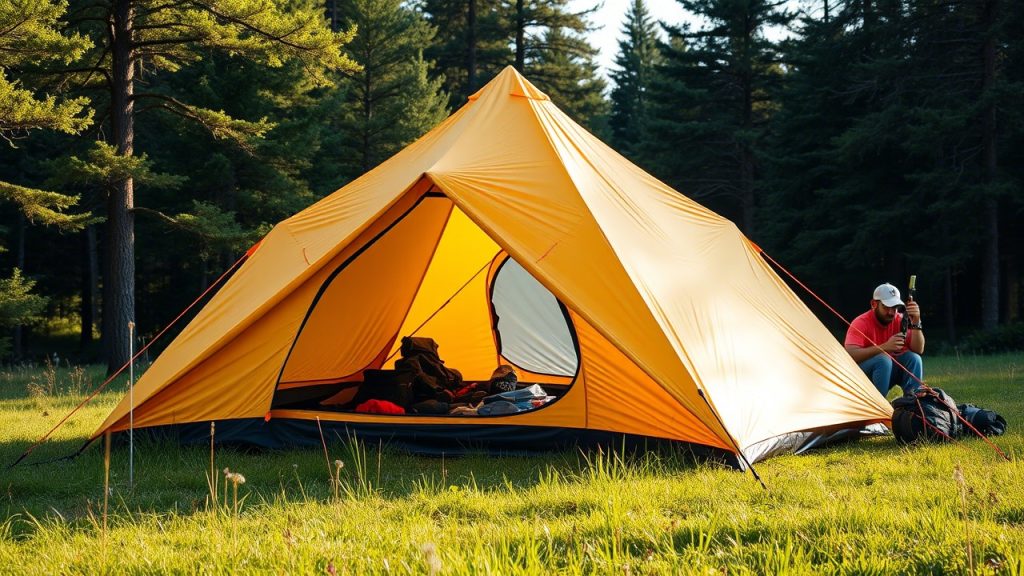
6. The Tunnel Tent:
- Concept: An elongated, semi-cylindrical shape supported by parallel hoops. Offers excellent space-to-weight ratio and good wind resistance when pitched correctly.
- Features: Typically 2-4 parallel poles, a spacious interior with good headroom along the central axis, large vestibules, and a full fly that extends to the ground.
- Warmth Factor: Good, especially when the fly is well-sealed. The large vestibules can act as buffer zones.
- Ideal For: Winter backpacking and ski touring where space and weight are considerations, good for windy conditions when oriented correctly.
- Considerations: Requires secure anchoring as it’s not freestanding. Wind performance is highly dependent on pitching direction.
7. The Single-Wall Tent with Vapor Barrier Liner:
- Concept: A lightweight option where the outer shell also serves as the inner tent. A separate vapor barrier liner is used to manage condensation.
- Features: Single layer of waterproof and breathable fabric, often very lightweight, may have minimal or no vestibule. Requires a separate vapor barrier liner worn by the occupants or used as a tent liner.
- Warmth Factor: Moderate on its own, but the vapor barrier liner significantly reduces moisture buildup inside the tent, preventing evaporative heat loss from damp gear and clothing, thus indirectly increasing warmth.
- Ideal For: Fast and light winter ascents or trips where weight is paramount and occupants are diligent about using the vapor barrier.
- Considerations: Condensation management is crucial and relies heavily on the use of the vapor barrier. Can feel less comfortable than double-wall tents.
8. The Tipi Tent:
- Concept: A conical tent supported by a central pole or tripod. Offers a large interior space and good ventilation potential.
- Features: Single or double-wall construction, a central pole or tripod support, often with a vent at the peak, can be used with or without a stove.
- Warmth Factor: Can be very warm when used with a stove. Without a stove, warmth depends on the fabric and ventilation management.
- Ideal For: Group camping, base camps, those who appreciate a spacious interior and the option of using a stove.
- Considerations: Can be bulky and heavy. Requires careful pitching. Single-wall versions can be prone to condensation without proper ventilation.
9. The Hybrid Dome/Tunnel Tent:
- Concept: Combining the stability of a dome with the spaciousness of a tunnel tent.
- Features: Typically features a dome-like sleeping area for stability and tunnel-like extensions for vestibules and extra living space, a robust pole structure, and a full fly.
- Warmth Factor: Good, offering a balance of stability and space with good weather protection.
- Ideal For: Winter camping where a balance of stability, space, and weight is desired.
- Considerations: Can be more complex to set up than simpler designs.
10. The Emergency Bivy Sack with Tent Poles:
- Concept: An ultra-lightweight and minimalist shelter for solo adventurers in emergency situations or for highly mobile trips.
- Features: A waterproof and breathable single-person sack, often with a small hoop or pole to create minimal headroom.
- Warmth Factor: Provides basic protection from the elements and can trap some body heat, but not designed for prolonged comfort in extreme cold.
- Ideal For: Emergency shelter, minimalist winter ascents where weight is absolutely critical, as a backup shelter.
- Considerations: Very limited space, significant condensation can be an issue, not suitable for comfortable extended stays.
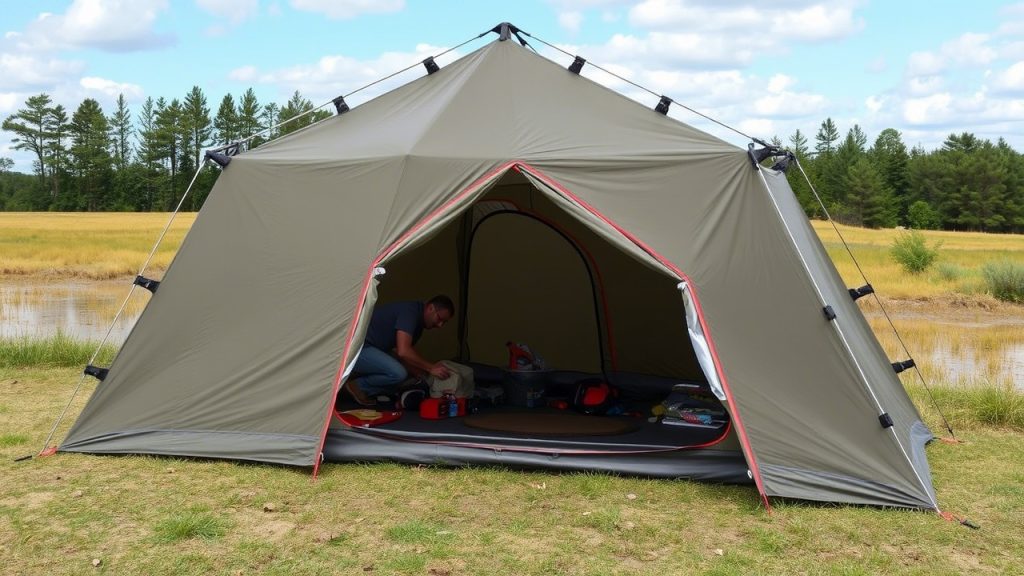
Maximizing Warmth Inside Your Tent (Regardless of the Tent Type)
Choosing the right tent is only the first step. Here are crucial strategies to enhance warmth inside your chosen shelter:
- Choose the Right Campsite: Select a sheltered location away from direct wind exposure. If possible, camp below the treeline or behind natural windbreaks.
- Utilize Snow as Insulation: If camping on snow, stomp down the area where you’ll pitch your tent to create a more stable and insulating base. You can also build low snow walls around your tent to block wind.
- Use a High R-Value Sleeping Pad: Your sleeping pad is the primary barrier against heat loss to the cold ground. Choose a pad with a high R-value (a measure of insulation). Consider using two pads for extreme cold.
- Invest in a Cold-Weather Sleeping Bag: Select a sleeping bag with a temperature rating appropriate for the expected conditions. Err on the side of warmth.
- Wear Warm Layers to Bed: Don’t rely solely on your sleeping bag. Wear thermal base layers, a fleece jacket, and even a hat and gloves inside your bag for added warmth.
- Heat Water: A hot water bottle placed inside your sleeping bag before you get in can provide significant warmth. Ensure the bottle is well-sealed.
- Eat and Hydrate Properly: Your body needs fuel to generate heat. Eat calorie-rich foods and stay well-hydrated.
- Ventilate Carefully: While minimizing heat loss is important, some ventilation is necessary to reduce condensation. Open vents slightly or crack a zipper to allow moist air to escape.
- Organize Your Gear: Keep wet or snow-covered gear in the vestibule to prevent moisture from entering the main sleeping area.
- Consider a Tent Footprint: A footprint protects the bottom of your tent from damage and can add a slight layer of insulation.
Frequently Asked Questions
1. What is the difference between a 3-season and a 4-season tent?
A 3-season tent is designed for spring, summer, and fall, focusing on ventilation and lighter materials. A 4-season tent is built to withstand harsh winter conditions, featuring stronger poles, more durable fabrics, a full fly for complete weather protection, and often less mesh in the inner tent to retain warmth.
2. Do I really need a 4-season tent for winter camping?
While you might get away with a robust 3-season tent in mild winter conditions with no significant snow or wind, a true 4-season tent offers significantly better protection and warmth in challenging winter environments. The stronger construction is crucial for handling snow loads and strong winds, and the full fly provides essential insulation and moisture protection.
3. How important is a full fly on a winter tent?
A full fly that extends all the way to the ground is extremely important for winter camping. It provides maximum protection from snow, wind, and rain, helps to retain warmth by creating a buffer layer of air, and creates a vestibule for storing gear and cooking, keeping moisture and debris out of the sleeping area.
4. What is an R-value, and why is it important for a sleeping pad in winter?
R-value is a measure of thermal resistance – a higher R-value indicates better insulation. In winter, a sleeping pad with a high R-value is crucial because it prevents your body heat from being conducted away by the cold ground. Without adequate insulation underneath you, even the warmest sleeping bag won’t be fully effective.
5. How can I prevent condensation inside my winter tent?
Condensation occurs when warm, moist air inside the tent comes into contact with the cold tent walls. To minimize it:
* Ventilate your tent by opening vents or slightly unzipping windows.
* Avoid bringing wet gear inside the sleeping area. Store it in the vestibule.
* Try to minimize moisture from your breath by not talking excessively inside the tent.
* Consider using a vapor barrier liner (either worn or as a tent liner).
6. Should I use a tent footprint in the winter?
Yes, using a tent footprint is generally a good idea in winter. It protects the bottom of your tent from abrasion and potential damage from frozen ground or sharp objects hidden under the snow. It can also add a very slight layer of insulation and help keep the bottom of your tent cleaner and drier.
7. What are snow skirts, and how do they help keep a tent warm?
Snow skirts are fabric extensions around the base of the tent fly. In snowy conditions, you can bury these skirts in the snow, creating a seal that prevents drafts from entering the tent and keeps blowing snow out of the vestibule. This significantly improves warmth and comfort.
8. Is it safe to use a propane or butane heater inside a tent for warmth?
No, it is generally NOT safe to use unvented propane or butane heaters inside a tent. These heaters produce carbon monoxide, a colorless and odorless gas that can be deadly in enclosed spaces with poor ventilation. If you choose to use a heater, opt for a well-ventilated wood-burning stove in a tent specifically designed with a stove jack, and always use a carbon monoxide detector.
9. How do I choose the right size winter tent?
Consider the number of people who will be sleeping in the tent and the amount of gear you’ll need to store. In winter, having a little extra space can be beneficial for organizing gear and avoiding contact with cold tent walls. If you plan on spending extended time inside, especially during storms, a tent with more interior space and larger vestibules will be more comfortable.
Conclusion – Preparing for a Warm Winter Night
Venturing into the winter wilderness is a rewarding experience, but it demands careful planning and the right gear. Choosing a tent designed for cold weather and implementing smart strategies for warmth are paramount for your safety and comfort.
By understanding the different types of winter tents available and considering your specific needs and the conditions you expect to encounter, you can select the perfect shelter to keep you cozy and protected, allowing you to fully embrace the beauty and tranquility of a winter wonderland – all within the next week of thoughtful preparation and informed decision-making.

